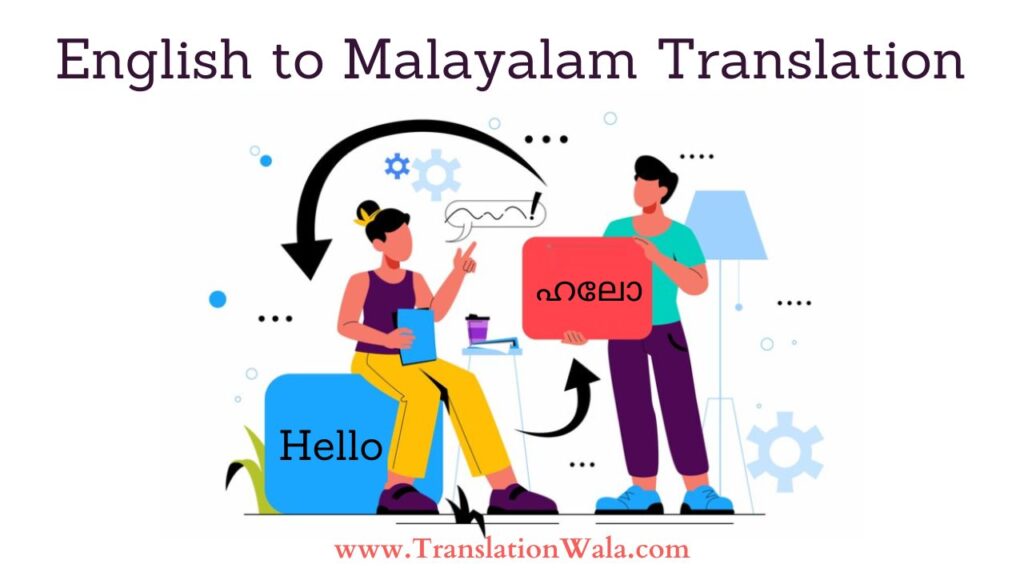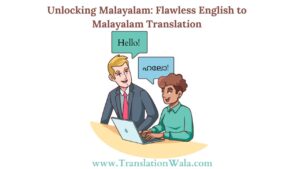In a world where English is becoming more and more popular, languages like Malayalam, which is spoken by more than 45 million people mostly in Kerala, India, have to find ways to keep their unique history alive while also connecting with people around the world. This is where English to Malayalam translation becomes an important tool, not just for talking to each other but also for keeping cultures alive and getting involved in the world.
Bridging the Gap: Unlocking Malayalam Literature and Heritage
Imagine that a huge collection of stories, songs, and academic works were locked away in Malayalam and most people around the world couldn’t get to them. For more people, English to Malayalam translation is the key that opens up this wealth of information and cultural expression. By translating both old and new books, we make sure that the unique voice of Malayalam writers and thinkers can be heard around the world. This helps people understand and appreciate Kerala’s rich history.
Translation also makes it possible for historical records, folktales, and traditional knowledge to be shared, which keeps this important information alive for future generations. Imagine that students all over the world could read translated versions of old Malayalam works to learn more about the history, philosophy, and social systems of the area. This not only makes Malay societies more proud of their culture, but it also adds to the body of information and understanding around the world.
Empowering Communication and Knowledge Sharing
Translation is an important part of everyday conversation, not just in writing and history. Translations of news stories, scientific study, and educational materials into Malayalam give people in the area easier access to knowledge and let them take part in global conversations. Think about how farmers could learn about sustainable farming by reading translated research papers or how students could read medical journals in their own language.
This two-way exchange also makes it possible for Malayalam speakers to be heard around the world. We make it easier for scholars, activists, and artists to share their ideas and add to global talks by translating current events news, study papers, and artistic works from Malayalam to English.
Also Read: Assamese Artistry: Unlocking Cultural Nuances with Seamless English to Assamese Translation

Ensuring Accuracy and Nuance: Navigating the Challenges of Translation
There is no denying the benefits of translating from English to Malayalam, but it is also important to know how to deal with the problems. Translating literary works requires both language skills and cultural awareness in order to catch the spirit and subtleties of the original text. In the same way, expert versions need to be exact and follow certain jargon.
To get high-quality versions that keep the meaning and effect of the original work, you need to pay for skilled interpreters who know both languages and cultures. Using advanced translation tools and encouraging translators and subject matter experts to work together can make translated material even more accurate and useful.
Building a Sustainable Ecosystem for Translation
A healthy ecology is needed to really use translation to protect legacy and communicate with people around the world. Among these are:
- Funding initiatives: Grants, funding, and awards can help translation projects and motivate translators and authors to do this important job.
- Building infrastructure: Creating online translation tools, dictionaries, and glossaries can make it easier for translators to work together and share resources.
- Promoting awareness: Making people more aware of how important translation is and pushing them to speak more than one language can build a market for high-quality translated material.
- Encouraging education: By supporting language learning programs and translation training, we can make sure that there will be trained interpreters in the future to carry the torch.
Conclusion: Translation as a bridge, not a barrier
English to Malayalam translation is an important way to bond and understand each other in a world that wants to do both. It protects Malayalam’s rich history and gives its users the tools they need to connect with people around the world. We can make sure that Malayalam keeps growing and adding to the world’s cultural fabric by spending in good versions, building a community that supports the language, and recognizing its strategic value.



